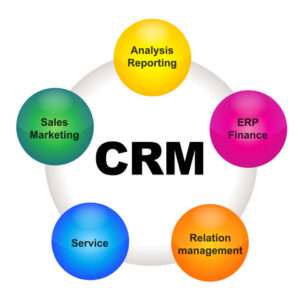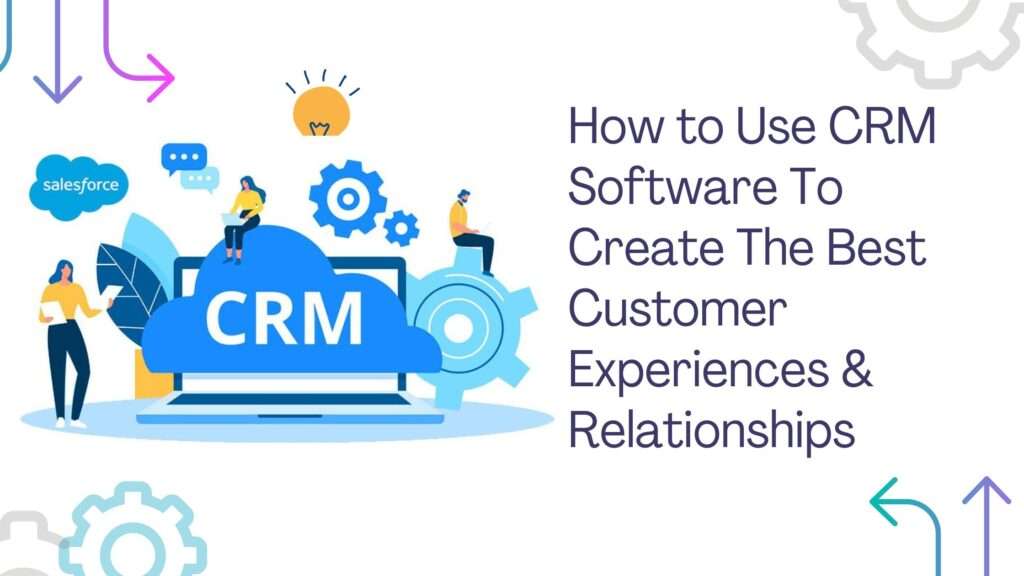Creating successful customer relationships is essential for any business. With the help of CRM software, you can easily increase customer engagement, measure customer satisfaction and build loyalty. Learn more in this article on how to use CRM software to optimize your customer experience and create the best customer relationships possible!
Introduction to CRM Software
CRM software is designed to help businesses manage their customer relationships. It can be used to track customer data, interactions, and communications. CRM software can also be used to create and manage customer loyalty programs. By using CRM software, businesses can provide their customers with the best possible experience and build strong relationships.
Benefits of Using CRM Software
In order to create the best customer experiences and relationships, businesses need to utilize CRM software. This software can help businesses keep track of their customers, prospects, and leads in one place. Additionally, CRM software can help businesses automate their marketing and sales processes. By using CRM software, businesses can nurture their relationships with their customers and provide them with the best possible experience.

How to Choose the Right CRM Software for Your Business
The way you interact with your customers has a big impact on their overall experience with your business. In order to create the best customer experiences and relationships, you need to choose the right CRM software for your business. Here are a few things to keep in mind when choosing CRM software:
- Make sure the software is customizable.
- Choose software that integrates with your existing systems.
- Consider your budget.
- Compare features and reviews of different CRM software options.
- Select a CRM software that offers the features you need for your business.
Best Practices for Using CRM Software
There are a few best practices to follow when using CRM software to create the best customer experiences and relationships. First, make sure that your CRM software is integrated with your other business systems. This will allow you to have a complete view of your customer’s interactions with your company. Secondly, use data from your CRM system to create targeted marketing campaigns. This will help you reach your customers with relevant messages and offers. Finally, make sure you’re providing excellent customer service. Your CRM system can help you keep track of customer issues and ensure that they are resolved in a timely manner. By following these best practices, you’ll be well on your way to creating amazing customer experiences that lead to lifelong relationships.
Tips for Improving Client Relationships with CRM Software
- Keep your CRM software up to date: make sure to enter new client data and keep track of changes in customer information. This will help you better understand your customers’ needs and how to best serve them.
-
Use your CRM software to segment your customers: create different groups based on customer characteristics (e.g., location, past purchase history, etc.) so you can tailor your communication and offerings accordingly.
-
Use automation features in your CRM software: automate tasks like follow-ups, appointment reminders, and thank-you notes to save time and improve efficiency.
-
Take advantage of reporting features: use the data in your CRM system to generate reports that will help you identify trends and improve your overall customer relationships.
-
Leverage customer feedback: use the feedback from your customers to identify areas of improvement and understand how satisfied they are with your services.
-
Connect with customers via social media: use social media platforms like Facebook, Twitter, and LinkedIn to engage with existing customers and reach out to potential new ones.
-
Make sure your customer service is top-notch: ensure that your customer service team is properly trained and has the right tools to provide the best possible experience.
-
Utilize data-driven insights: leverage the data in your CRM system to identify opportunities for growth and uncover new ways to interact with customers.
-
Personalize communication: send personalized messages to customers that are tailored to their interests, needs, and goals.
-
Focus on customer success: focus on helping customers succeed, as happy customers are more likely to remain loyal and continue doing business with you over time.
Examples of Successful CRM Strategies
Some of the most successful CRM strategies involve using the software to automate customer service tasks, such as responding to customer inquiries and requests. This can help create a more efficient and effective customer service experience, as well as freeing up time for customer service representatives to focus on more complex tasks.
Another common CRM strategy is using the software to track customer interactions and activity. This information can be used to identify trends and patterns, which can then be used to improve the overall customer experience. Additionally, this information can be used to target marketing efforts and create personalized experiences for customers.
Finally, many businesses use CRM software to create loyalty programs. These programs can help encourage customers to continue doing business with a company by offering rewards and incentives. Additionally, these programs can help businesses better understand their customers’ needs and preferences.
Challenges Faced With Implementing a CRM System
There are many potential challenges that can come up when implementing a CRM system. One common challenge is data migration. This is the process of transferring data from one system to another, and it can be difficult to do if the two systems are not compatible. Another challenge is that CRM systems can be complex, and it can be difficult to get them set up correctly. Additionally, users may resist using the system if they find it challenging to use. Finally, CRM systems require ongoing maintenance and updates, which can be costly.
Conclusion
Utilizing CRM software can help businesses to create the best customer experiences and relationships. With its gamut of features, it helps organizations manage their data efficiently, track customer journey for improved personalization, streamline communication with customers and provide better service as per their needs. Moreover, using a CRM also allows companies to measure customer satisfaction more effectively and make data-driven decisions. Thus, if implemented correctly, CRM software is an invaluable asset that every business should leverage in order to enhance the overall customer experience they offer.

